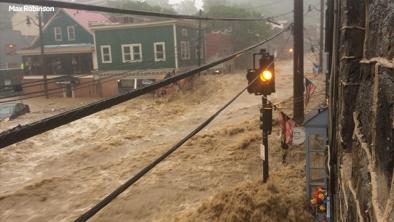Science Source
Attributing intensification of precipitation extremes to human influence
- Provides estimates of the human contribution to the observed widespread intensification of precipitation extremes
- Considers the annual maxima of daily (RX1day) and 5 day consecutive (RX5day) precipitation amounts over the Northern Hemisphere land area for 1951–2005
- Compares observed changes with expected responses to external forcings as simulated by multiple coupled climate models participating in Coupled Model Intercomparison Project Phase 5
- Detects the effect of anthropogenic forcings in extreme precipitation observations, both individually and when simultaneously estimating anthropogenic and naturally forced changes
- Finds that the effect of natural forcings is not detectable
- Estimates that human influence has intensified annual maximum 1 day precipitation in sampled Northern Hemisphere locations by 3.3% [1.1% to 5.8%, >90% confidence interval] on average
- Concludes that this corresponds to an average intensification in RX1day of 5.2% [1.3%, 9.3%] per degree increase in observed global mean surface temperature consistent with the Clausius‐Clapeyron relationship
Related Content
Headline

May 30, 2018 | Washington Post
The concept of a thousand-year rainstorm is legitimate but limited. Here’s what you should understand about it.
Headline

May 30, 2018 | USA TODAY
Ellicott City residents wonder: Was enough done after the 2016 flood to prepare for the next one?
Headline

May 28, 2018 | Washington Post
Man missing, search underway after massive flooding in Ellicott City, Md.
Headline

May 28, 2018 | Washington Post
The second 1,000-year rainstorm in two years engulfed Ellicott City. Here’s how it happened.


